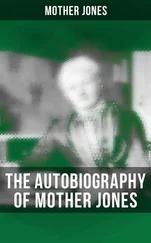Although genetics is all about inheritance, inheritance is certainly not all about genetics. Almost every attribute involves the joint action of the internal and the external world. A characteristic such as intelligence (or height) is often seen as a cake ready to be sliced into so much 'nature' and so much 'nurture'. In fact, the two are so closely blended that to separate them is like trying to unbake the cake. A failure to understand this simple fact leads to confusion and worse.
Not far from Herbert Spencer's (and his neighbour Marx's) tomb is a large red-brick house. It was occupied by Sigmund Freud after he fled Austria to avoid racial policies which descended from the Galtonian ideal. On his desk is a set of stone axes and ancient figurines. Freud's interest in these lay in his belief that behaviour is controlled by biological history. Everyone, he thought, recapitulates in their childhood the phases experienced during evolution. Freud saw unhappiness as a sort of living fossil, the reappearance of ancient behaviour which is inappropriate today. Like Galton he saw the human condition.is formed by inheritance. The libido and ego.in 1, lu* wrote, lat bottom heritages, abbreviated recapitulations of the development which all mankind passed through from its primaeval days'. Freud hoped that once he had uncovered the inborn fault which caused despair, he might be able to cure it.
Today's Freudians have moved away from their guru's Gaitonising of behaviour. They feel that nurture is important. Analysis looks for childhood events rather than race memories. In so doing they are in as much danger as their master of trying to unbake the cake of human nature. Any attempt to do so is futile.
The Siamese cat shows how pointless the task may be. Siamese have black fur on the tips of the ears, the tail and the feet, but are white or light brown elsewhere. They carry the 'Himalayan' mutation, which is also found in rabbits and guinea pigs (but not, alas, in humans). Crosses show that a single gene that follows Mendel's laws is involved. At first sight, then, the Siamese cat's fur is set in its nature: if coat colour is controlled by just one gene then surely there is no room for nurture to play a part.
However, the Himalayan mutation is odd. The damaged gene cannot produce pigment at normal body temperature but works perfectly if it is kept cool. As a result, the colder parts of the cat's body, its ears, nose and tail (and, for a male, its testicles) are darker than the rest. An unusuallydark cat can be produced by keeping a typical Siamese in the cold and a light one by raising it in a warm room. Inside every Siamese is a black cat struggling to get out. To ask whether its pattern is due to gene or to environment means nothing. It results from both. What the Siamese cat — and every other creature- inherits is an ability to respond to the circumstances in which it is placed.
Many inborn diseases show this effect. The recessive abnormality phenylketonuria (or PKU) affects about forty British children a year. V.Ach has an inherited defect in a particular enzyme which means that they cannot process an amino acid, phenylalanine, found in most foods. As a result they build up large amounts of a harmful by-product. Untreated, such children have low intelligence and die young. The fate of those with PKU is, it seems, sealed by their genes.
Rut most PKU children born today lead more or less ordinary lives. A change in the environment saves them. If they are diagnosed early (and all babies are tested at birth), they can be given food which lacks all but a tiny amount of phenylalanine. They then develop as healthy infants. Their nature has been determined by careful nurturing and the question of whether DNA or diet is more important to their health has no answer.
Hundreds of genes show the same interaction. A whole new science turns on individual differences in the response to drugs. The genes involved were unknown until humans began to manipulate their chemical milieu. A few people carry an inherited variant which makes them fatally sensitive to a muscle-relaxant used before surgery and everyone is now tested to see whether they are at risk before the drug is given. One of the stranger injunctions of Pythagoras was a caution to his followers not to eat broad beans. He died because, pursued by a mob enraged by his philosophical views, he refused to escape across a beanfield. Pythagoras lived in the Italian city of Croton. Many of its modem inhabitants feel unwell if they eat partly cooked beans. One of the side-effects of the thalassaemia gene (which is common there) is to remove the ability to break down a chemical found in broad beans {and another one used as an anti-malarial drug). When gene and bean (or drug) are brought together, the results can be unpleasant or, in the case of the drug, worse.
All this means that the boundaries between inherited disease and what is governed by the extern.il world have become blurred. That alters the way we think abiuii medicine. Individual treatments may soon be tailored to a patient's biological heritage. Two disorders, anencephaly and spina bifida, cause a failure of development of the spinal cord; and each runs in families. Part of the problem, though, has to do with poor diet. Their incidence shot up in Holland after the famine of 1945 and both are frequent in Ireland and in Scotland (places known for an unhealthy diet). Mothers who have had an affected child now take vitamin supplements in later pregnancies. This reduces the chance of their genes damaging their children.
A change in the environment can also cause genetic disease. Hay fever was not recognised as a distinct illness until 1819, when it (and its relatives asthma and eczema) were seen as afflictions of the rich. Now, about half the people of the western world are, or claim to be, allergic to one substance or another. In Britain one child in four has asthma. The lung becomes inflamed and its muscles sensitive to the slightest irritation. The unfortunate patient wheezes and coughs, and may suffer permanent damage — and, sometimes, even sudden death. The illness involves an over-reaction by the immune system to an external stimulus. House-dust mites are one culprit, cats another, pollen a third. They were around before 1819, but, for some reason, caused few problems.
Part of the reason lies in the modern world, with its obsession with cleanliness. This may have abolished many infectious diseases, but allows others, once rare, toreveal our inborn weaknesses. Asthma is a disease of the middle class; more common in those well fed as children, in infants dosed with antibiotics, and in Western rather than Eastern Europe. The children of farmers and of those with dogs have less chance of the illness than do vegetarians in a pet-free home. It is an affliction of Thrushcross Grange rather than of Wuthering Heights.
Emily Bronte knew the answer. Cathy, when she returns clean and demure after her convalescence at Thrushcross Grange is faced by Heathcliff's: 'I shall be as dirty as I please; and I like to be dirty, and I will be dirty!' Filth is the key. Infants born into clean households are deprived of an essential learning experience. Not their brain but their immune system lacks stimulation. Middle-class homes lack the grime with which humankind evolved. The immune system, like the brain itself, must be trained to deal with the challenges that it will face later in life. Each needs stimulation; but the immune system demands tapeworms rather than Mozart.
Whatever the importance of dirt, asthma and its relatives have an inherited component. Identical twins are more likely each to suffer than are non-identicals, and those who bear certain variants in genes that code for elements of the immune system are also liable to become ill. Tristan da Cunha, that distant and inbred island in which many people share the same genes, has an epidemic of asthma, with almost half the population affected.
Читать дальше
Конец ознакомительного отрывка
Купить книгу












